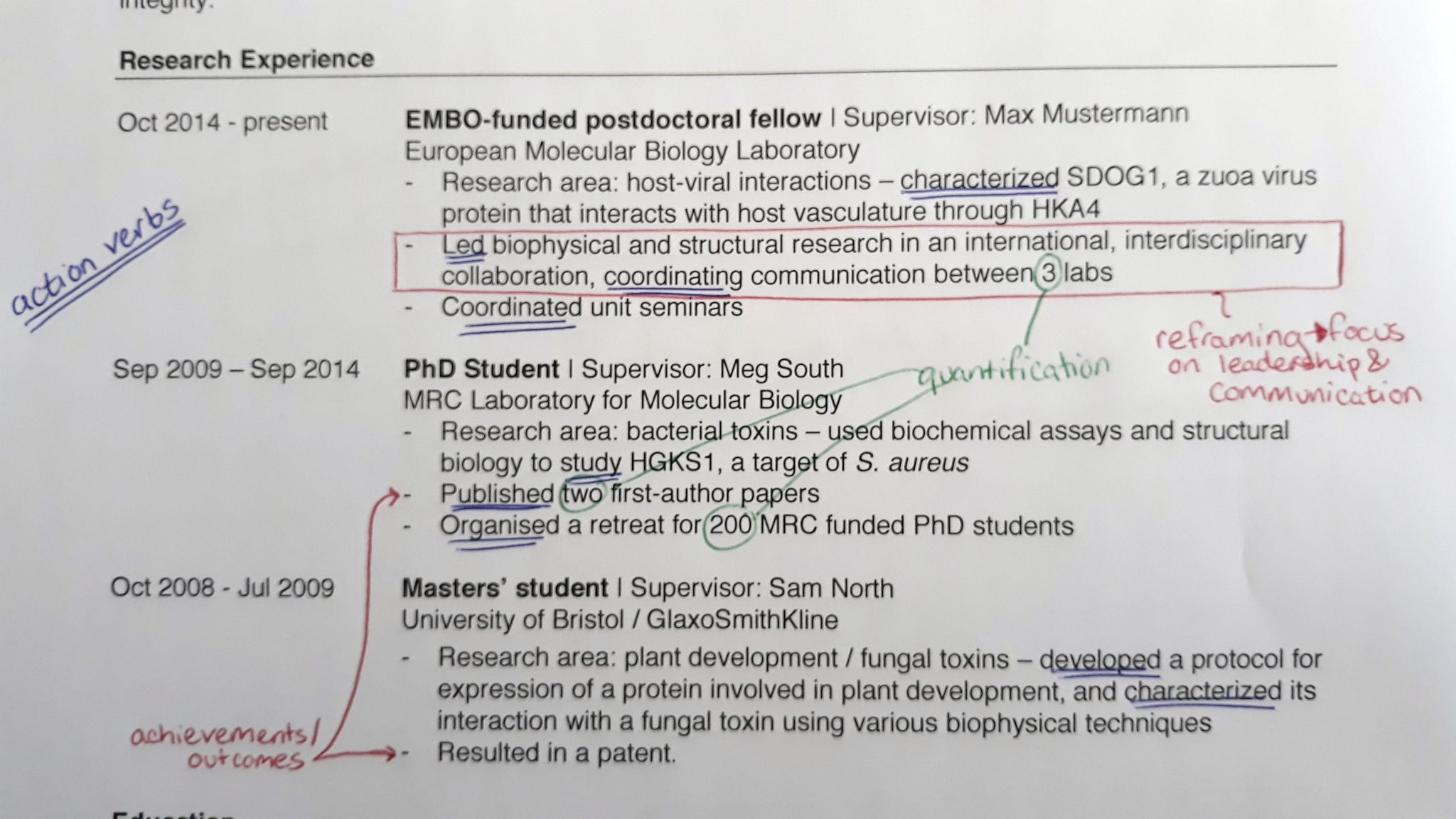Crafting impactful statements for your CV and cover letter
When you are writing a job application, it is essential to describe your experience in a way that highlights the skills relevant for the position you are applying for. We’ve previously posted on some general tips on preparing job applications for industry. In this post, we provide details of some techniques that can help you demonstrate your skills in your CV & cover letter.
1. Action verbs
Action verbs can help demonstrate your skills by clarifying your role in projects. This can be particularly helpful for short statements on your CV.
For example, rather than simply stating:
“Project: role of gene xyz in process abc , collaboration with Bloggs & Mustermann labs”
to emphasize your role in assay development, you could write:
“Developed biochemical assays to investigate the role of gene xyz in process abc.”.
or emphasis leadership you could write:
“Led project coordination and biochemical research in an international collaboration that revealed the role of gene xyz in process abc.”
Be precise so that you demonstrate your skills without overstating your role. If you are unsure how your statements could be interpreted, ask others for feedback.
See: 185 action verbs (external) or (within EMBL) handouts on job applications, which also includes a list of action verbs relevant for scientists’ applications.
2. Quantification, achievements and evidence
The easiest way of demonstrating a skill is to provide evidence of a positive outcome. For example, if you have great feedback for courses you have taught on, you can use this feedback in the cover letter to evidence your communication skills.
I have taught a number of courses at EMBL, where my ability to communicate complex topics has resulted in excellent evaluations (average rating 4.9 / 5, where 5 is excellent teaching).
Quantification can more generally provide context for the scale of projects, helping to show the impact of your work.
If there is a key skill you have, but you don’t have hard evidence for, you could instead simply give examples of when you have used the skill. Additionally, if you want to really highlight this skill – show you know what makes someone good in this area:
During my postdoc, I have communicated my results in a wide-variety of settings, for example by writing a news and views article on a paper in my field. I have learnt the importance of tailoring the message to the audience and of using clear but precise language.
3. Re-framing experiences to highlight key skills
As this article outlines, framing examples in different ways can change the skills you are highlighting. See below for some examples that would be suitable for a cover letter, and note the use of different action verbs. Reframing your examples can also be used for shorter CV bullet points.
To highlight impact / ability to deliver results – highlight the outcomes and your actions
I introduced a new high-throughput assay in the lab, which enabled analysis of x samples per day (increase of x compared to previous method). In addition to my project, the assay has now been used for 6 other projects and contributed to research in 4 papers to date.
To highlight teamwork – define who you worked with
I introduced a new high-throughput assay in the lab, collaborating closely with the light microscopy facility to ensure compatibility with existing technology. I also worked with 5 others in the lab so that the technique could be applied to their projects in addition to my own.
To highlight communication skills – define the different ways you communicated
I introduced a new high-throughput assay in the lab, successfully persuading my PI to fund the adaptations to our microscopy set-up, and liaising with the company providing the technology and with the light microscopy laboratory. Additionally, I wrote detailed documentation and carried out informal training sessions, enabling others to use the technique for their own research.
Ability to Work Independently – define your contribution
I initiated and implemented introduction of a new assay in the lab. This involved independently researching high-throughput techniques, gaining PI and budget approval, and liaising between the company providing the technology and relevant stakeholders at the institute.
Project management – define the complexities & process
I led the introduction of a new high-throughput assay into the lab. This involved carrying out an analysis of the potential solutions, helping prepare documentation for budget approval, and finally coordinating delivery and installation, including liaising with the company providing the technology and relevant stakeholders at the institute.
Bringing it together
The annotation below shows how these techniques could be used in the research experience section. The level of detail, focus and exact points included should depend on the role you are applying for.

Relevant sources:
- Other articles on job applications from this blog
- (within EMBL) EMBL Fellows’ Career Service : handouts e.g. on Academic Applications | Non-Academic Applications
- University of Columbia career service post on impactful bullet points
- Boehringer Ingelheim guide to creating a compelling job application
- NatureCareers academic and nonacademic toolkits
- UCSF and UPenn sample CVs
- Blog post from @akrook on describing your skills in a cover letter
- Jobs.ac.uk article on identifying your unique selling points
